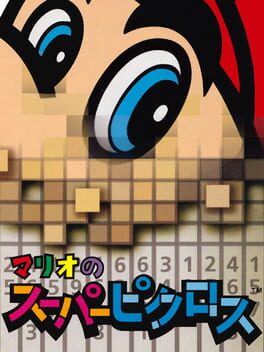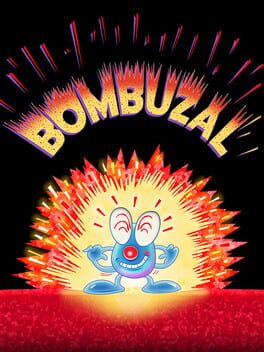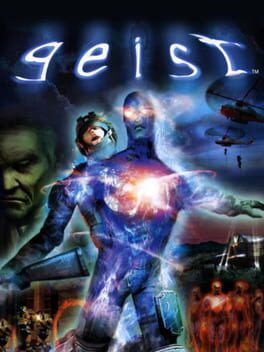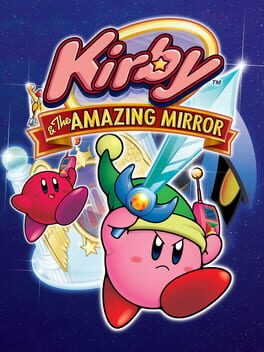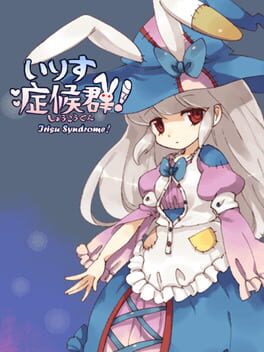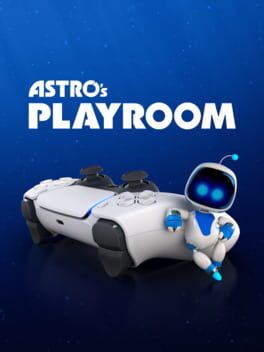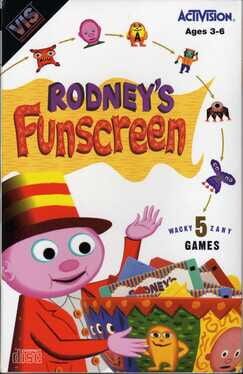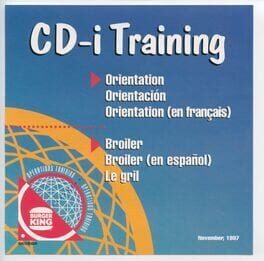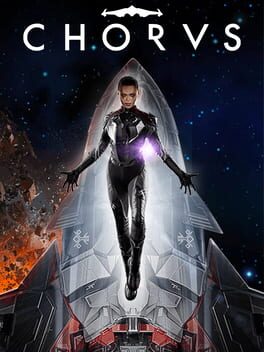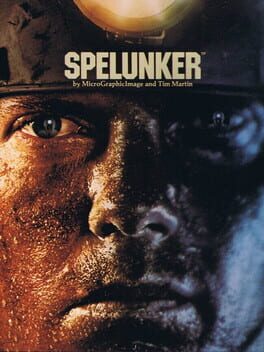jtduckman
139 Reviews liked by jtduckman
About three months ago I started playing nothing but Picross on my Switch, whether that's a sign of me losing interest in the system or me growing older is up for interpretation. Essentially my version of when my grandma played crossword puzzles for hours as she watched Monday Night Raw, except I'm playing Picross as I'm catching up with NXT. I could theoretically be playing Picross until the next ice age considering how much of it there is, but regardless...
Mario's Super Picross may as well be training from hell in preparation for the easy shit in the S Series. When I was a Picross rookie I used to think the stuff in Genesis/Master System edition were hard, but then Wario came along and slapped me in the face with shit that took me upwards of an hour to figure out, and now I'm the Picross Pope. You know what though? Good for him, Wario's a chill motherfucker with his lack of time limit and not breaking my fingers if I mark an incorrect space like that asshole Mario, who flat out expects me to have that shit on his desk by 5 o'clock sharp with a finger smashing mallet in his hands.
I'm not sure I quite like it as much as the first game on Game Boy, I don't think it's as cute, but I absolutely wouldn't be averse to playing that one again if it shows up on NSO, but alas Nintendo already wants to give us random shovelware titles on Game Boy, so who knows when the hell that will show up. Probably Christmas of next year if we're lucky, hopefully along with Picross 2 that I only knew existed like a few weeks ago.
Mario's Super Peakcross.
I'm not entirely sure what else to put here, but I will say that a few months ago I started trying to learn Japanese characters again and it was pretty cool when I could recognize them in here.
Mario's Super Picross may as well be training from hell in preparation for the easy shit in the S Series. When I was a Picross rookie I used to think the stuff in Genesis/Master System edition were hard, but then Wario came along and slapped me in the face with shit that took me upwards of an hour to figure out, and now I'm the Picross Pope. You know what though? Good for him, Wario's a chill motherfucker with his lack of time limit and not breaking my fingers if I mark an incorrect space like that asshole Mario, who flat out expects me to have that shit on his desk by 5 o'clock sharp with a finger smashing mallet in his hands.
I'm not sure I quite like it as much as the first game on Game Boy, I don't think it's as cute, but I absolutely wouldn't be averse to playing that one again if it shows up on NSO, but alas Nintendo already wants to give us random shovelware titles on Game Boy, so who knows when the hell that will show up. Probably Christmas of next year if we're lucky, hopefully along with Picross 2 that I only knew existed like a few weeks ago.
Mario's Super Peakcross.
I'm not entirely sure what else to put here, but I will say that a few months ago I started trying to learn Japanese characters again and it was pretty cool when I could recognize them in here.
Bombuzal
1988
GET READY GET GET GET GET REA READY READY READY GET GET GET READY GET READY HAHAHAHA HAHAHAHAHAHAHAHAHAHA
I CAN'T FUCKING TAKE IT ANYMORE GET READY GET READY HAHAHAHAHAHAHAHAHAHAHAHAHA GE GE GE GEGEGEGET READY BOMBUZAL ON THE SUPER NINTENDO HAHAHAHA ON THE SWITCH ONLINE SERVICE YOU BETTER GET RE READY READY GET READY HAHAHAHAHA OVER 130 LEVELS AHEAD OF YOU YOU BETTER GET PREPARED OR SHOULD I SAY READY HAHAHAHAHAHAHA
I CAN'T FUCKING TAKE IT ANYMORE GET READY GET READY HAHAHAHAHAHAHAHAHAHAHAHAHA GE GE GE GEGEGEGET READY BOMBUZAL ON THE SUPER NINTENDO HAHAHAHA ON THE SWITCH ONLINE SERVICE YOU BETTER GET RE READY READY GET READY HAHAHAHAHA OVER 130 LEVELS AHEAD OF YOU YOU BETTER GET PREPARED OR SHOULD I SAY READY HAHAHAHAHAHAHA
Geist
2005
I’m starting to realize that I might have an obsession with possession games, and for good reason. They’re convenient mechanics that developers can slip into practically any genre, because they’re extremely simple and consistent to implement but also allow developers to naturally iterate off the environments presented to construct a variety of scenarios despite using the same base structure. Not only that, they allow the developers to quickly pump out a variety of different characters/objects for players to possess that don’t need to be completely fleshed-out with backstories and a full toolkit. Simply put, possession mechanics are a super easy way to utilize heavy context-sensitivity but with the added benefit of feeling more grounded thanks to consistent execution, while providing an easy in-narrative explanation for why the mechanics exist within the lore.
Case in point, let’s consider Geist. Here’s the pitch: the game combines elements of several of my favorite possession games in Ghost Trick, Haunt the House, and a touch of Why Am I Dead at Sea (predating all of these titles by several years!), and it has guns to boot. How could this game possibly be bad!? You play as the ghost of John Raimi, separated from his physical body after being captured in a raid gone wrong, and it’s up to you to foil Volks Corporation’s schemes while saving himself and his pals from a score of supernatural projects. To do so, Raimi must possess objects to scare staff and animals around the facility, and then possess those living creatures in turn to progress deeper with their different abilities. Oh, and sometimes there are gunfights too.
Like most games fixated on possession mechanics, you can think of Geist as having two distinct modes: ghost mode and possession mode. As an ethereal being, Raimi can pass through thin walls like chain-link fences and glowing wall-cracks (referred to as “Slips”) while time is slowed around him. However, he cannot physically interact with most objects (including solid doors) outside of possession, and is constantly racing against the clock because his spirit remains untethered to the world without his body. Consequently, Raimi must possess hosts to reset the timer while utilizing their functionalities to progress. Humans and animals provide more resistance, and as such must be scared by possessing inanimate objects to thoroughly terrify them into submission. Thus, the game provides a plethora of different situations to tackle through the intersection of these two different modes while keeping the controls and baseline mechanics the same. One minute you’re possessing a dog to bark at rats, then the next minute you’re possessing a rat you just frightened to utilize crawlspaces, then the minute after that you’re possessing furniture accessed from the crawlspace to scare the living daylights out of a scientist so you can access his credentials for the lab. Not every element is fully realized (for example, I would have loved if there were more dogs present to serve as hazards that could alert guards to the presence of ghosts to enforce stealth while simultaneously providing possessable vessels that could trick those same guards into opening doors for me), and some of the levels are fairly linear in approach as a result with only one clear solution, but I can’t fault Geist too much; after all, the concept never wore out its welcome in the first place when I was constantly thrown new objectives and new hosts to mess around with.
That said, Geist starts to stray a bit from the light when they pull out the guns. Just judging it as a strict FPS compared to its contemporaries, the flaws are extremely pronounced. For example, aiming feels very stiff due to the sluggish camera scrolling speed (with no way to adjust camera sensitivity in the options menu) as well as constant frame drops further complicating precise aim. There’s also slight but very noticeable aim assist that often snaps the reticle to nearby targets, which gets obnoxious when you’re trying to scroll the camera over to focus on higher-priority enemies but the reticle gets stuck along the way. Having said that, weapon hitboxes are greatly exaggerated, so the reticle often glows red while hovering an inch off the enemy model and landing shots can feel very undeserved. Firefights are ridiculously free even while discounting this, however: much of this is due to the poor AI, as enemies have practically no self-preservation instincts and will often fail to react to faraway shots or run straight into live gunfire from the player. Additionally, most enemies go down in a few shots regardless of where they’re shot (so you don’t even need to go for the head) and the player has infinite ammo/grenades once a soldier is possessed, so as long as the player remembers to reload clips during downtime, the player can just fire at abandon mowing down everything in their way.
The result is that the vast majority of combat ranges from forgettable to disappointing, but even while criticizing the poor base gunplay mechanics, I can acknowledge the potential that the combat had when combined with the possession mechanics. In my mind, the best encounters should focus on emphasizing the interplay between ghost mode and possession mode, through coaxing the player to jump out of hosts to exploit arena set-pieces and then immediately jumping back into hosts to continue assaults. Geist does manage to rise to the occasion a few times, starting with a mid-game sequence where Raimi must jump in and out of explosive objects scattered around a corridor to clear a path for his friend. The developers then immediately variate upon this with a succinct chase sequence. Perhaps the most ambitious segment of the game, the player has to juggle possessing a motorcycle to steer past traps, possessing a mounted truck turret to lay down gunfire, and jumping back onto the road to temporarily possess explosive crates to detonate upon nearby foes. Admittingly these moments are rare in the overall scope of Geist’s many combat scenarios, but it's these welcome glimpses of promise that really incentivized me to push forward.
It is a shame then, that the later levels of the game lean heavily into straight action sequences which don't build upon the core possession premise very well. For instance, the first half of Chapter 7 involves various combat simulations where the player generally possesses one host per exercise and must eliminate all enemies in the arena while staying contained within the host. There’s nothing offensively bad about most of these exercises (except for the opening sniping sequence, which I found to be extremely tedious due to the slow and forced zoom-in of the scope every time I had to aim another shot), but I have to wonder what compelled the devs to shoehorn these straight gunplay sequences in when Chapter 5’s highs more than demonstrate their prowess. The real kicker however, comes in during the last couple of chapters, where you’re given access to characters that can enter rechargeable “boost-mode” to take out enemies in slow-mo. While this sounds great in theory, the game is more than happy to swarm you with bulkier enemies in the last couple of hours, meaning that the optimal strategy is to camp by activating boost mode, safely walking out of cover to take potshots, and then retreating back to cover before boost mode expires and waiting for the gauge to refresh so the process begins anew. Think of this as a budget version of F.E.A.R.’s bullet-time mechanics, though missing the dynamic AI to pressure players into experimentation and also lacking the flashy particle physics and satisfying weapon impact. The annoying hostile ghosts exclusive to these chapters also reinforce this behavior, because trying to approach said ghosts will result in them grabbing the player and dragging them off-stage or into hazards, giving the player insufficient time to mash out of the hold. As such, Geist ironically slogs its way to a conclusion due to betting it all on extravagant combat in exchange for its clever possession puzzles.
Surprisingly, despite all my criticism, I found myself really enjoying the whole experience. It’s a heavily flawed game that has plenty of room for improvement, but at the same time, no flawed game has left me quite as excited for what the medium is capable of as this game has. I find it hard to be overly derogatory towards Geist; N-Space feels like it was trying to accomplish so much with surprisingly little, and I have nothing but respect for such an enthusiastic team that approached the game’s development like a puppy excited to play with a new chew toy. It may not be a very polished game, but it’s a game that dares to try and break new ground and was one of the first major titles that dared to tinker with possession mechanics. Geist paved the way for many more experimental yet realized possession adventure games that have since become mainstays of my personal recommendations, and I couldn’t ask for anything more than that from my favorite era of gaming.
Case in point, let’s consider Geist. Here’s the pitch: the game combines elements of several of my favorite possession games in Ghost Trick, Haunt the House, and a touch of Why Am I Dead at Sea (predating all of these titles by several years!), and it has guns to boot. How could this game possibly be bad!? You play as the ghost of John Raimi, separated from his physical body after being captured in a raid gone wrong, and it’s up to you to foil Volks Corporation’s schemes while saving himself and his pals from a score of supernatural projects. To do so, Raimi must possess objects to scare staff and animals around the facility, and then possess those living creatures in turn to progress deeper with their different abilities. Oh, and sometimes there are gunfights too.
Like most games fixated on possession mechanics, you can think of Geist as having two distinct modes: ghost mode and possession mode. As an ethereal being, Raimi can pass through thin walls like chain-link fences and glowing wall-cracks (referred to as “Slips”) while time is slowed around him. However, he cannot physically interact with most objects (including solid doors) outside of possession, and is constantly racing against the clock because his spirit remains untethered to the world without his body. Consequently, Raimi must possess hosts to reset the timer while utilizing their functionalities to progress. Humans and animals provide more resistance, and as such must be scared by possessing inanimate objects to thoroughly terrify them into submission. Thus, the game provides a plethora of different situations to tackle through the intersection of these two different modes while keeping the controls and baseline mechanics the same. One minute you’re possessing a dog to bark at rats, then the next minute you’re possessing a rat you just frightened to utilize crawlspaces, then the minute after that you’re possessing furniture accessed from the crawlspace to scare the living daylights out of a scientist so you can access his credentials for the lab. Not every element is fully realized (for example, I would have loved if there were more dogs present to serve as hazards that could alert guards to the presence of ghosts to enforce stealth while simultaneously providing possessable vessels that could trick those same guards into opening doors for me), and some of the levels are fairly linear in approach as a result with only one clear solution, but I can’t fault Geist too much; after all, the concept never wore out its welcome in the first place when I was constantly thrown new objectives and new hosts to mess around with.
That said, Geist starts to stray a bit from the light when they pull out the guns. Just judging it as a strict FPS compared to its contemporaries, the flaws are extremely pronounced. For example, aiming feels very stiff due to the sluggish camera scrolling speed (with no way to adjust camera sensitivity in the options menu) as well as constant frame drops further complicating precise aim. There’s also slight but very noticeable aim assist that often snaps the reticle to nearby targets, which gets obnoxious when you’re trying to scroll the camera over to focus on higher-priority enemies but the reticle gets stuck along the way. Having said that, weapon hitboxes are greatly exaggerated, so the reticle often glows red while hovering an inch off the enemy model and landing shots can feel very undeserved. Firefights are ridiculously free even while discounting this, however: much of this is due to the poor AI, as enemies have practically no self-preservation instincts and will often fail to react to faraway shots or run straight into live gunfire from the player. Additionally, most enemies go down in a few shots regardless of where they’re shot (so you don’t even need to go for the head) and the player has infinite ammo/grenades once a soldier is possessed, so as long as the player remembers to reload clips during downtime, the player can just fire at abandon mowing down everything in their way.
The result is that the vast majority of combat ranges from forgettable to disappointing, but even while criticizing the poor base gunplay mechanics, I can acknowledge the potential that the combat had when combined with the possession mechanics. In my mind, the best encounters should focus on emphasizing the interplay between ghost mode and possession mode, through coaxing the player to jump out of hosts to exploit arena set-pieces and then immediately jumping back into hosts to continue assaults. Geist does manage to rise to the occasion a few times, starting with a mid-game sequence where Raimi must jump in and out of explosive objects scattered around a corridor to clear a path for his friend. The developers then immediately variate upon this with a succinct chase sequence. Perhaps the most ambitious segment of the game, the player has to juggle possessing a motorcycle to steer past traps, possessing a mounted truck turret to lay down gunfire, and jumping back onto the road to temporarily possess explosive crates to detonate upon nearby foes. Admittingly these moments are rare in the overall scope of Geist’s many combat scenarios, but it's these welcome glimpses of promise that really incentivized me to push forward.
It is a shame then, that the later levels of the game lean heavily into straight action sequences which don't build upon the core possession premise very well. For instance, the first half of Chapter 7 involves various combat simulations where the player generally possesses one host per exercise and must eliminate all enemies in the arena while staying contained within the host. There’s nothing offensively bad about most of these exercises (except for the opening sniping sequence, which I found to be extremely tedious due to the slow and forced zoom-in of the scope every time I had to aim another shot), but I have to wonder what compelled the devs to shoehorn these straight gunplay sequences in when Chapter 5’s highs more than demonstrate their prowess. The real kicker however, comes in during the last couple of chapters, where you’re given access to characters that can enter rechargeable “boost-mode” to take out enemies in slow-mo. While this sounds great in theory, the game is more than happy to swarm you with bulkier enemies in the last couple of hours, meaning that the optimal strategy is to camp by activating boost mode, safely walking out of cover to take potshots, and then retreating back to cover before boost mode expires and waiting for the gauge to refresh so the process begins anew. Think of this as a budget version of F.E.A.R.’s bullet-time mechanics, though missing the dynamic AI to pressure players into experimentation and also lacking the flashy particle physics and satisfying weapon impact. The annoying hostile ghosts exclusive to these chapters also reinforce this behavior, because trying to approach said ghosts will result in them grabbing the player and dragging them off-stage or into hazards, giving the player insufficient time to mash out of the hold. As such, Geist ironically slogs its way to a conclusion due to betting it all on extravagant combat in exchange for its clever possession puzzles.
Surprisingly, despite all my criticism, I found myself really enjoying the whole experience. It’s a heavily flawed game that has plenty of room for improvement, but at the same time, no flawed game has left me quite as excited for what the medium is capable of as this game has. I find it hard to be overly derogatory towards Geist; N-Space feels like it was trying to accomplish so much with surprisingly little, and I have nothing but respect for such an enthusiastic team that approached the game’s development like a puppy excited to play with a new chew toy. It may not be a very polished game, but it’s a game that dares to try and break new ground and was one of the first major titles that dared to tinker with possession mechanics. Geist paved the way for many more experimental yet realized possession adventure games that have since become mainstays of my personal recommendations, and I couldn’t ask for anything more than that from my favorite era of gaming.
Still a Kirby game on its face borrowing good things from the other GBA titles, and its style of cooperative multiplayer has the potential to be a lot of fun. Gradually exploring and uncovering more of the map as a team has its moments. But unfortunately, it's bogged down by a major lack of polish in basically every department, the most egregious among them being level design. Some other poor choices such as forcing synchronization on the pause (map) screen for all players and battery management only cause frustration for the multiplayer experience.
Floigan Bros.
2001
Irisu Syndrome
2008
A Japanese cult-classic video game and it's not hard to see why.
A relatively simple but very memorable game with a lot of polish, Irisu Syndrome! really fires on all cylinders with addictive gameplay, an absolutely outstanding soundtrack filled with melancholy tunes you could spend a whole rainy day just listening to, and a genuinely intriguing story unbefitting for a puzzle game of this type that maximizes your immersion as the mystery unfolds by encouraging you to look outside of just the game window for more.
As a fan of many other types of colour-matching puzzle games, the dynamic style of gameplay in this is particularly refreshing, giving you very tight control over the descent and spin of the falling pieces and having a superb balance of risk and reward. Thus, although pattern recognition of the falling blocks is still an element, you get a euphoric sense of improving your finesse in moving pieces between tighter spaces and in more precise directions over time like an action game.
It was definitely worth getting all the endings and files for this and I will have to start a search for more puzzle games that scratch this same itch.
A relatively simple but very memorable game with a lot of polish, Irisu Syndrome! really fires on all cylinders with addictive gameplay, an absolutely outstanding soundtrack filled with melancholy tunes you could spend a whole rainy day just listening to, and a genuinely intriguing story unbefitting for a puzzle game of this type that maximizes your immersion as the mystery unfolds by encouraging you to look outside of just the game window for more.
As a fan of many other types of colour-matching puzzle games, the dynamic style of gameplay in this is particularly refreshing, giving you very tight control over the descent and spin of the falling pieces and having a superb balance of risk and reward. Thus, although pattern recognition of the falling blocks is still an element, you get a euphoric sense of improving your finesse in moving pieces between tighter spaces and in more precise directions over time like an action game.
It was definitely worth getting all the endings and files for this and I will have to start a search for more puzzle games that scratch this same itch.
Kyoei Toshi
2017
It's sometime in the middle of the night. The streets of the city are deserted, save for a few poor souls seeking shelter and, of course, all the debris strewn about. We look up at a street corner and notice that we're in front of a radio station, and the lights are on inside. My friend Yuki insists we go in. I'm very tired, and it seems like as good a place to rest as any.
When we get up to the studio on the 5th or 6th floor, we find about a dozen people, maybe a few more already here. There are some chairs set up in the studio itself, and a woman sits at a grand piano. I see a guy who looks like he might work here; I ask him what's going on. "Normally you'd have to pay, but a bunch of people didn't show up, so go on in," he says. Yuki and I go in and take a seat.
After a few moments, the woman at the piano speaks: "Welcome to our regular live broadcast of Midnight Sky Garden. With everything going on, we had decided to cancel tonight's performance, but then we saw the number of people who showed up anyway--people who, despite the danger outside, made the trek to our studio tonight to see me play. And we thought about it, and we thought that maybe, with all the anxiety and fear and uncertainty in our lives right now, the best thing we could do is let the show go on, give all of you out there a moment of respite in these trying times. So without further ado..."
She begins to play. It's sweet, slow, lovely. The other audience members are enraptured. I--as in Me, not the Me I am playing in this video game--start to cry, and I don't know why. But then...maybe I do know. After all, these are trying times in the real world too, aren't they? Can I really be blamed for finding resonance in the notion of people putting themselves in extreme danger to seek out some fleeting semblance of normalcy and comfort? Or that someone else is willing to put their own selves at risk to provide that comfort? Well. In any event, I sit, and the video game Me sits, and I and Yuki and the sparse studio audience and the woman at the piano share this sweet, sad, quiet moment, not thinking about anything else, in this tiny studio, in the middle of the night, somewhere in the world.
And then an Eva unit cuts the building in half.
When we get up to the studio on the 5th or 6th floor, we find about a dozen people, maybe a few more already here. There are some chairs set up in the studio itself, and a woman sits at a grand piano. I see a guy who looks like he might work here; I ask him what's going on. "Normally you'd have to pay, but a bunch of people didn't show up, so go on in," he says. Yuki and I go in and take a seat.
After a few moments, the woman at the piano speaks: "Welcome to our regular live broadcast of Midnight Sky Garden. With everything going on, we had decided to cancel tonight's performance, but then we saw the number of people who showed up anyway--people who, despite the danger outside, made the trek to our studio tonight to see me play. And we thought about it, and we thought that maybe, with all the anxiety and fear and uncertainty in our lives right now, the best thing we could do is let the show go on, give all of you out there a moment of respite in these trying times. So without further ado..."
She begins to play. It's sweet, slow, lovely. The other audience members are enraptured. I--as in Me, not the Me I am playing in this video game--start to cry, and I don't know why. But then...maybe I do know. After all, these are trying times in the real world too, aren't they? Can I really be blamed for finding resonance in the notion of people putting themselves in extreme danger to seek out some fleeting semblance of normalcy and comfort? Or that someone else is willing to put their own selves at risk to provide that comfort? Well. In any event, I sit, and the video game Me sits, and I and Yuki and the sparse studio audience and the woman at the piano share this sweet, sad, quiet moment, not thinking about anything else, in this tiny studio, in the middle of the night, somewhere in the world.
And then an Eva unit cuts the building in half.
Astro's Playroom
2020
A very effective commercial for a product I already bought. I wish it was much more than that.
Comparing this to Nintendo is an inevitability. This is a pack-in exclusive launch title, a platformer with a focus on motion/controller gimmicks, and a heavy focus on brand nostalgia. I got a lot of the same feelings with this that I did the first time I played Super Mario 3D World; that was the first console game I ever played in HD in my own home, and Xbox's output has been weak enough that this may as well be the first new big budget 4K console game to grace my living room. Not to mention very few games ask you to blow on your controller.
That said, I would mostly compare this game to the "other" side of Nintendo. You can use a site like MobyGames to find out who did what on your favorite games, and with any luck, you can find out what they're doing now. Through various spurts of curiosity I've found over time that for many of the most charming Nintendo games of yesteryear, there are two main paths for the people who worked on them; either they get promoted to a leadership position and little of their own work makes it into subsequent products, or, well...
I don't know how to charitably say this. They polish turds. Their talents are wasted making boring products sellable. They do good work, and I'm sure they like it; if your job is to draw Mario, and you love drawing Mario, then it might not matter whether you're drawing Mario for the platformers or the RPG's or the sports games. People who did some of the best work during the Gamecube/GBA-era across every discipline from programming to sound design are working hard to give the next Mario Party a mirror sheen.
It's not like Japan Studio had been doing that much for the past decade anyway, mostly development support and remasters, but knowing that Team Asobi has more or less replaced it makes this celebration feel a bit more like a funeral than an anniversary. I suppose we'll find out how valid this is whenever we found out what Asobi is doing next.
For every time I point at the screen and clap my hands and say "I know what that is! I remember the PSone attachable LCD screen!" there's a reference to LocoRoco or Vib Ribbon or Jumping Flash, something that in my opinion stands in stark contrast to this perfectly egg-shaped, orifice-less non-mascot. Astro makes fucking Sackboy look like he has life in his eyes. The game takes opportunities to remind us of games that felt truly fresh and new, but aside from the sheer fidelity, Astro's Playroom just doesn't have much going on at its core.
The core, though, is only part of the experience. Each level is a more or less even split between the bare-bones traditional platforming and a unique controller gimmick mini-game. It's genuinely very strange. PlayStation controllers have had motion capability since the PS3 launched, but they didn't exactly have a good start so it doesn't seem to have ever caught on. After a few hours of this I replayed the early sections of Horizon Zero Dawn to get my save file caught back up to where I was on PS4, and found myself fruitlessly moving the controller; why don't more games support gyro-aiming when it's been an option for so long? The PS4 controller is nearly a decade old, the touchpad already seems so deprecated that I don't even think most of the PS5 UI even lets you use it for navigation or typing anymore, and yet I have never seen a better use of it than the rolling mini-game in Astro's Playroom. It's like when Nintendo Land's Zelda mini-game had more responsive swordplay than the previous year's actual Zelda game.
That's the thing, there is a quality here, I think this game can grab you. It's pretty, it has a genuinely excellent soundtrack, it's full of easter eggs and call-backs and weird little interactions. Despite its flimsy backbone it offers some mechanically interesting moments. It's a game that knows its history, it was made in part by some of the same people who made that history. To make one last Nintendo comparison, it reminds me a bit of Bowser's Fury in the sense that they both feel like something that simply could not exist anymore as a standalone product. They're both a complimentary piece to a more "known quantity" product, they both lift a substantial amount of their assets from a previous game (Astro Bot Rescue Mission in this case), and they both make me hope that something new is down that road, something that takes the good parts of this small experience and fleshes out the parts where it's lacking. They both make me worried that such something is not down the road at all.
Throughout the game you can find a number of robots who have hearts in their eyes, in a frenzied glee, pawing at and rubbing against the objects of their affection, PlayStation hardware. I don't know what exact purpose this serves, if that's meant to be a representation of how much the developers love the brand, if that's how they expect players to behave, or if this is meant to suggest and cultivate that kind of fervor. I guess I know this feeling is somewhat pathetic, but it's such an extreme expression of enthusiasm that it makes me feel sort of sad. Sad that so many people are buying this console, a system the aesthetics of which are so absurd and in-your-face that they're impossible to ignore, and they skip over this game the same way you might skip over the 3DS's AR cards or StreetPass games, sad that to a lot of people a game like this is just cluttering up the screen on the box that plays the next Call of Duty. Sad that so many people, even some of the people who like games, even some of the people who work with games, view games as a waste of time. Sad that if this is a genuine expression of love for games from the people who make them that it needs to be ran through the filter of this edgeless, faceless, lifeless drone. It makes me feel kind of stupid and out of touch for caring about games even half as much as this imaginary robot does.
Comparing this to Nintendo is an inevitability. This is a pack-in exclusive launch title, a platformer with a focus on motion/controller gimmicks, and a heavy focus on brand nostalgia. I got a lot of the same feelings with this that I did the first time I played Super Mario 3D World; that was the first console game I ever played in HD in my own home, and Xbox's output has been weak enough that this may as well be the first new big budget 4K console game to grace my living room. Not to mention very few games ask you to blow on your controller.
That said, I would mostly compare this game to the "other" side of Nintendo. You can use a site like MobyGames to find out who did what on your favorite games, and with any luck, you can find out what they're doing now. Through various spurts of curiosity I've found over time that for many of the most charming Nintendo games of yesteryear, there are two main paths for the people who worked on them; either they get promoted to a leadership position and little of their own work makes it into subsequent products, or, well...
I don't know how to charitably say this. They polish turds. Their talents are wasted making boring products sellable. They do good work, and I'm sure they like it; if your job is to draw Mario, and you love drawing Mario, then it might not matter whether you're drawing Mario for the platformers or the RPG's or the sports games. People who did some of the best work during the Gamecube/GBA-era across every discipline from programming to sound design are working hard to give the next Mario Party a mirror sheen.
It's not like Japan Studio had been doing that much for the past decade anyway, mostly development support and remasters, but knowing that Team Asobi has more or less replaced it makes this celebration feel a bit more like a funeral than an anniversary. I suppose we'll find out how valid this is whenever we found out what Asobi is doing next.
For every time I point at the screen and clap my hands and say "I know what that is! I remember the PSone attachable LCD screen!" there's a reference to LocoRoco or Vib Ribbon or Jumping Flash, something that in my opinion stands in stark contrast to this perfectly egg-shaped, orifice-less non-mascot. Astro makes fucking Sackboy look like he has life in his eyes. The game takes opportunities to remind us of games that felt truly fresh and new, but aside from the sheer fidelity, Astro's Playroom just doesn't have much going on at its core.
The core, though, is only part of the experience. Each level is a more or less even split between the bare-bones traditional platforming and a unique controller gimmick mini-game. It's genuinely very strange. PlayStation controllers have had motion capability since the PS3 launched, but they didn't exactly have a good start so it doesn't seem to have ever caught on. After a few hours of this I replayed the early sections of Horizon Zero Dawn to get my save file caught back up to where I was on PS4, and found myself fruitlessly moving the controller; why don't more games support gyro-aiming when it's been an option for so long? The PS4 controller is nearly a decade old, the touchpad already seems so deprecated that I don't even think most of the PS5 UI even lets you use it for navigation or typing anymore, and yet I have never seen a better use of it than the rolling mini-game in Astro's Playroom. It's like when Nintendo Land's Zelda mini-game had more responsive swordplay than the previous year's actual Zelda game.
That's the thing, there is a quality here, I think this game can grab you. It's pretty, it has a genuinely excellent soundtrack, it's full of easter eggs and call-backs and weird little interactions. Despite its flimsy backbone it offers some mechanically interesting moments. It's a game that knows its history, it was made in part by some of the same people who made that history. To make one last Nintendo comparison, it reminds me a bit of Bowser's Fury in the sense that they both feel like something that simply could not exist anymore as a standalone product. They're both a complimentary piece to a more "known quantity" product, they both lift a substantial amount of their assets from a previous game (Astro Bot Rescue Mission in this case), and they both make me hope that something new is down that road, something that takes the good parts of this small experience and fleshes out the parts where it's lacking. They both make me worried that such something is not down the road at all.
Throughout the game you can find a number of robots who have hearts in their eyes, in a frenzied glee, pawing at and rubbing against the objects of their affection, PlayStation hardware. I don't know what exact purpose this serves, if that's meant to be a representation of how much the developers love the brand, if that's how they expect players to behave, or if this is meant to suggest and cultivate that kind of fervor. I guess I know this feeling is somewhat pathetic, but it's such an extreme expression of enthusiasm that it makes me feel sort of sad. Sad that so many people are buying this console, a system the aesthetics of which are so absurd and in-your-face that they're impossible to ignore, and they skip over this game the same way you might skip over the 3DS's AR cards or StreetPass games, sad that to a lot of people a game like this is just cluttering up the screen on the box that plays the next Call of Duty. Sad that so many people, even some of the people who like games, even some of the people who work with games, view games as a waste of time. Sad that if this is a genuine expression of love for games from the people who make them that it needs to be ran through the filter of this edgeless, faceless, lifeless drone. It makes me feel kind of stupid and out of touch for caring about games even half as much as this imaginary robot does.
Chorus
2021
Chorus
2021
Spelunker
1983
Once you get over the learning curve of the controls (it actually feels really good for 85), you'll find an early example of a precision platformer that treats you like an adult, requiring mastery of its (frankly limited) systems to succeed. You'll be repeating the first few screens over and over, but you'll find yourself getting a little bit further with each attempt. Just don't focus on beating it as quickly as possible, a perfect run is only about 20 minutes long. It's truly the Dark Souls of platformers ;)
Seriously, give it a go. A complete run of the first loop will take a while, but it's really not as intimidating as it might initially seem. There's a reason this game has stuck in the minds of Japanese game fans. I would have been all over this if I was a Famicom owner back then.
Seriously, give it a go. A complete run of the first loop will take a while, but it's really not as intimidating as it might initially seem. There's a reason this game has stuck in the minds of Japanese game fans. I would have been all over this if I was a Famicom owner back then.
